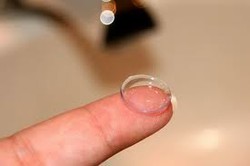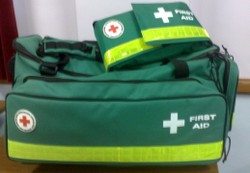Extended wear contacts lens have continuously enjoyed resurgence over the past few years, and products such as the new silicone hydrogel contact lens material allow more oxygen to penetrate through the cornea in comparison to the materials which were previously been used. This increase in oxygen enables the cornea to be healthier overall.

The Different Types Of Extended Wear Contact Lenses
by CRfan
Extended wear is a frequently used term for contacts but can be misleading. There is a difference between brands that you can sleep in.
Similar Words, Different Meanings
There are different words which are used interchangeably to describe extended wear contacts lens that are worn by people during the night. Some of the descriptions entail:
- Flex Wear: This is mainly used for occasional overnight wears. The term is often misunderstood. Example Brand - Frequency 55
- Extended wear (EW): These are products that can be worn for up to six consecutive night. Example Brand - Acuvue Oasys
- Continuous wear (CW): These are products which can be used for up to 30 consecutive nights. Example Brand - Air Optix Night & Day Aqua
The FDA in most cases approves the use of extended wears for up to 7 days continuously. The Air Optix & Day Aqua brands were the first products which were approved by the FDA to be used for 30 days continuously.
History Of Extended Wear Contacts
Soft contact lenses have been around for almost forty years, even though their popularity blossomed in the early 80’s. It was way back in 1981 when the FDA approved lenses to be used for up to 30 days continuously, and as a result of this decision, soft lenses became popular overnight. However, this popularity was short lived, because sooner rather than later, reports from researchers indicated that there was an increase in complications which were believed to be coming from corneal ulcers and conjunctivitis. As a result, in 1989 the FDA was forced to reverse their decision and only approve the lenses for 7 days of continuous use.
Some of the reasons provided for the above complications were that unhygienic lenses were the main cause, even though research is indicating differently and showing that oxygen is the main factor when it comes to prevent complications associated with contact lens wear. However, soft contact lenses still require hygienic maintenance just like any other type of contact lenses.
So How Much Oxygen Does The Cornea Need?
Most of the contact lenses brands available provide adequate supply for healthy operations of the cornea. In most cases cornea tend to swell during the night due to lack of oxygen because of the eyelids. It has been estimated that 3-4% of swelling during the night is normal, and this can also vary depending on the individual, and vary from night to night.
It is recommended that the oxygen permeability (dK/L) should be a minimum of 24 in order to avoid the swelling of the cornea. The extended wear should come with a dK/L wear of 87 in order to accommodate approximately 3-4% of swelling hence the cornea can comfortably return to the normal state during daytime.
For instance, Air Optix Night & Day Aqua comes with a dK/L value of 140, and this amount is more than what the cornea requires and even surpasses the safety net for oxygen.
Tips For Successful Extended Wear
These extended wear lenses should be regularly cleaned and taken care of like other ordinary lens types. Microscopic organisms such as pathogens, fungi, and bacteria normally thrive under warm and moist environments. These organisms easily get trapped under contact lenses and may cause problems such as pain or blurry vision, redness, and irritations in the eyes.
In case individuals using contact lenses experience such problems, it is advisable to seek consultations from an eyecare professional.
There are also various factors which contribute towards eye infection, and this includes: poor general health conditions, blepharitis, history of eye infections, swimming with contacts, and smoking cigarettes.
It is advisable to follow the doctor’s prescriptions when using extended wear contacts, and it is even recommended by eye specialists that these lenses should be taken out every day as a sign of best practices.
Do you sleep in your contact lenses?
You might also like
Painfree Arthritic Knees Without SurgeryAPOS therapy saved my life. I was on a fast downhill spin into disability, se...
First Aid: Would you Know What to Do?A medical emergency could happen at any moment. The question is whether you h...



 How The FDA Approves New Medicineson 08/16/2013
How The FDA Approves New Medicineson 08/16/2013
 10 Tax Mistakes Business Owners Makeon 08/05/2013
10 Tax Mistakes Business Owners Makeon 08/05/2013
 Accessories For Traveling With Jeweleryon 02/12/2013
Accessories For Traveling With Jeweleryon 02/12/2013
 Stages of the Sleep Cycleon 09/23/2012
Stages of the Sleep Cycleon 09/23/2012


Comments